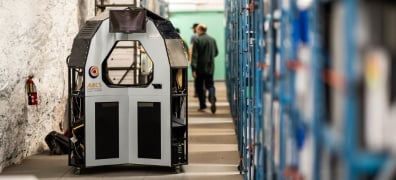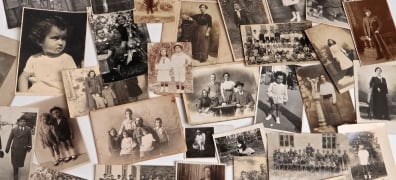EIAJ-1
In the Iron Mountain Digital Studios, digitising historic EIAJ-1 tape format is rare, mainly due to its likely migration to newer formats over time and its brief period of use. This rarity suggests that large collections of EIAJ-1 tapes may not exist.

In the Iron Mountain Media and Archive Services Digital Studios, we only have the opportunity to digitise the historic EIAJ-1 tape format very rarely. It can be quite cumbersome to digitise EIAJ-1 effectively due to an array of mechanical inconsistencies that exist with the EIAJ-1 recorders/players, along with any other irregularities or ‘decay’ of the media itself that may have occurred over the years. Presumably most EIAJ-1 has already been systematically migrated, or dubbed, to newer formats through the years, which may partially explain why we do not see troves of this format rolling through our studios. However, the use of the EIAJ-1 standard was relatively short-lived in comparison to other formats released during this time period, so it’s more likely that large archives of EIAJ-1 simply don’t exist.
The history of this format is pretty interesting. In 1969, the Electronic Industries Association of Japan (EIAJ) created the EIAJ-1, a standardized videotape format that was recorded on 1/2" analogue videotape on an open reel. EIAJ-1 was first released in black & white only for industrial, educational, medical, consumer and non-broadcast use. Later, colour capability was introduced as video technology progressed. EIAJ-1 was portable and in some cases it was even designed to be battery-powered, which made it incredibly versatile for professionals and consumers alike.
The EIAJ-1 standard was developed primarily to solve incompatibility issues caused by its predecessors, such as the Sony Portapack (shown below), which also recorded to 1/2" analogue open-reel videotape, but in a proprietary, non-interoperable fashion. Prior to the introduction of EIAJ-1, each manufacturer used their own methodology and design when recording to 1/2" analogue open-reel videotape, which could vary by speed, head type, transports, etc. As a result, if you recorded a tape on one machine, you would have to use that same type or generation of machine from that same manufacturer to playback the tape to either view it or reproduce it. This caused significant intercompatibility issues for those using and recording on these systems (e.g., if you recorded on a Sony machine, you would not be able to play your tape back on an Ampex or Panasonic machine).

The Sony Portapack
The EIAJ-1 standard resolved this incompatibility issue and brought together the manufacturers to begin producing a mutually compatible recording standard. This format helped to pave the way for consumer video technology that was not only cost-effective but available to the masses, as an alternative to 8mm (or Super 8mm) or 16mm film. Many public access television stations and news channels adopted this new standard due to its lightweight, portable form factor.
A few key advantages of EIAJ-1 versus film technology that existed at the time were:
- It allowed the user to playback and view what they shot immediately.
- Longer running times.
- The tape allowed for reuse, or re-recording.
- Lighter form factor.
Despite its short life, EIAJ-1 paved a path for many advancements in video technology and proved to be useful in a variety of use cases that helped consumers and professionals alike reduce their dependence on film and transition into video tape. EIAJ-1 was rapidly succeeded by the videocassette, leading to the inception of the U-matic (about a year after EIAJ-1 was effectively released to the public) and VHS formats. Both U-matic and VHS were adopted in a more widespread fashion, specifically due to the more effective cassette form factor. U-matic was very appealing to broadcasters, while VHS became extremely popular amongst consumers.
Featured services & solutions
Related resources
View More Resources

